20 June 2016
Cushendun Conglomerate of the Cross Slieve Group, Northern Ireland
Posted by Callan Bentley
Want a geological irony? Here’s one!
You’re looking at a rounded boulder of Cushendun Conglomerate, a Devonian “Old Red Sandstone” unit (Cross Slieve Group) exposed at Cushendun Caves, Northern Ireland, U.K. The irony lies in the repetition of history – a tumbling environment of high water energy, rounding cobbles and boulders and depositing them, in order to make the conglomerate. And now, ~400 million years later, history repeats itself, with the same rock! Note the surrounding cobbles, being tumbled and rounded in a very similar way. Compare and contrast:
I found this boulder on the beach at Cushendun, a charming little town on the eastern coast of Northern Ireland. Just south of town are a series of rocky islets and caves cut into a headland of this conglomerate.
Here’s my field assistant in the cave:
The view out among the sea stacks to the countryside beyond:
If you watch the HBO series Game of Thrones, you may recognize Cushendun Caves as the place where [spoiler alert] the red priestess Melisandre gave birth to a shadow demon thing. Check out the conglomerate on the wall behind her!
That scene was not being reenacted when we visited, to mixed emotions.
Anyhow, we weren’t there to be GoT tourists (though there were plenty of other folks doing exactly that!); we were there for the rocks. During the Devonian, mountain-building shuddered to life in the British Isles. As the mountains rose, they shed sediment in vast quantities, and much of it was deposited along the flanks of that ancient range. There were arkoses aplenty to be seen in the building stones along our walk in from the parking area:
But at the caves themselves, the arkose is joined by a bunch of big boulders of quartzite and related rocks, all very well rounded:
In many places, as above, the clasts don’t touch much – the conglomerate is “matrix supported.” The locals call it puddingstone.
Elsewhere, the big grains touch each other, including along grain boundaries that are flush (apparently planar) or impinging on their neighbors in a concave/convex relationship. This is evidence of pressure solution; the dissolving of portions of these cobbles at the highest-stress areas where they touched. Check out the lower/middle right of this outcrop photo, for instance:
Here are four GigaPans so you can check for these features yourself:
Link GigaPan by Callan Bentley
Link GigaPan by Callan Bentley
Link GigaPan by Callan Bentley
Link GigaPan by Callan Bentley
Post-depositional stresses fractured these conglomerates with a set of distinct co-parallel fractures, some of which acted as faults. Can you spot the fault in this next image?
Here’s my favorite outcrop at the Cushendun Caves:
Before I explain, see if you can suss it all out.
…
Okay, I’m not waiting any longer!
In this photo, there are many examples of flush/impinging grain boundaries (circled in white in the annotated version below), plus some of those flush grain boundaries (black) have been offset along a set of small faults (traced out in yellow):
It’s a neat place to visit. If you find yourself in Cushendun, I can’t think of any reason why you wouldn’t make a point of visiting.





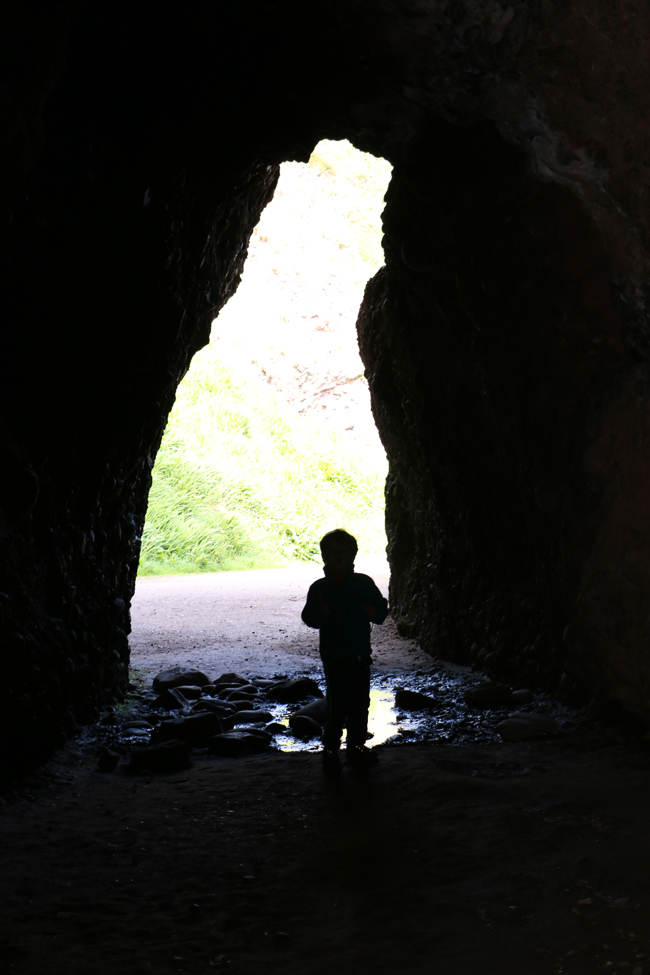
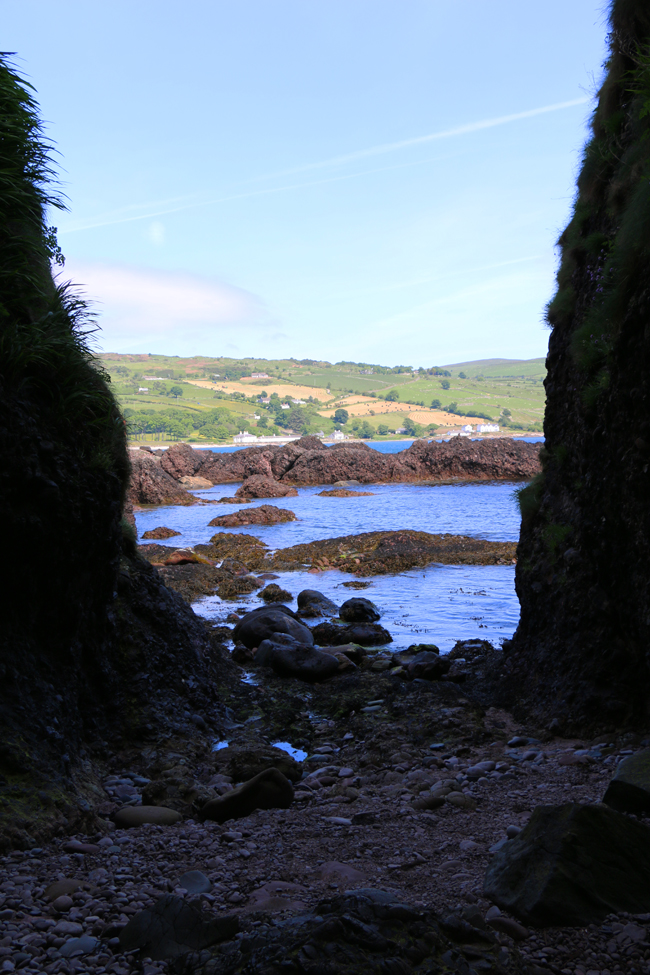

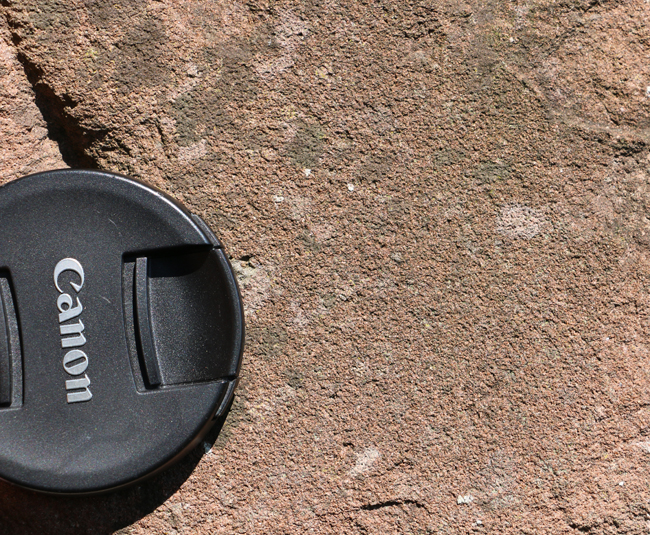
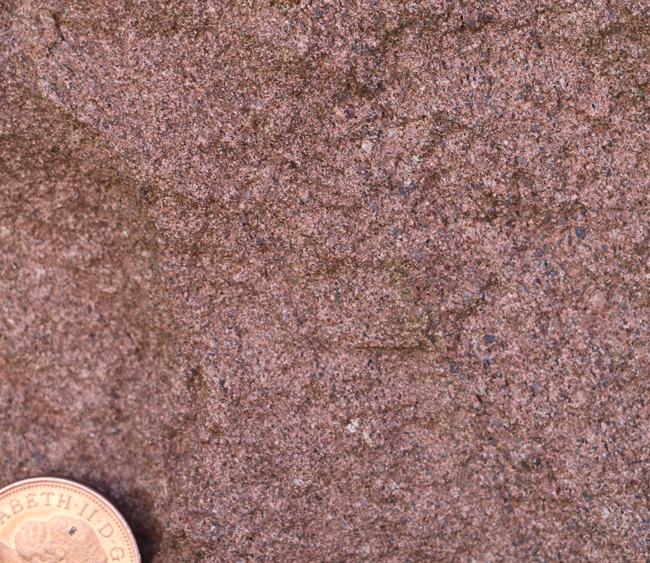


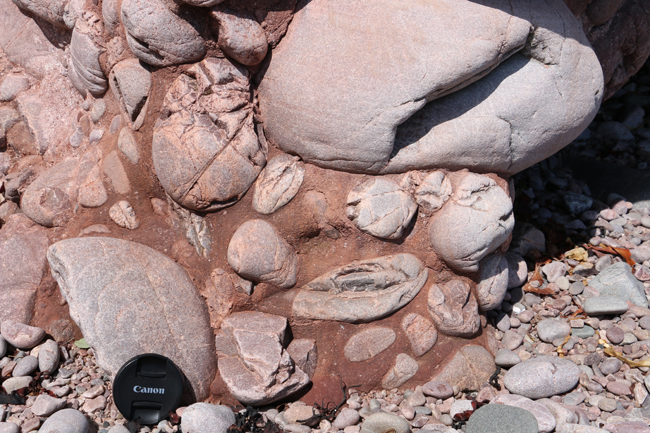

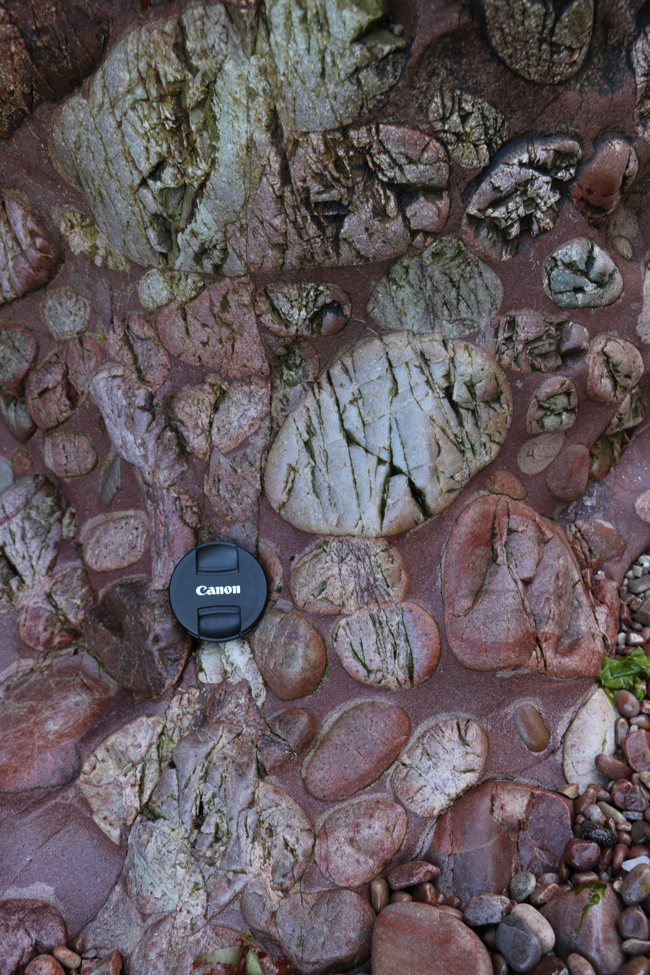

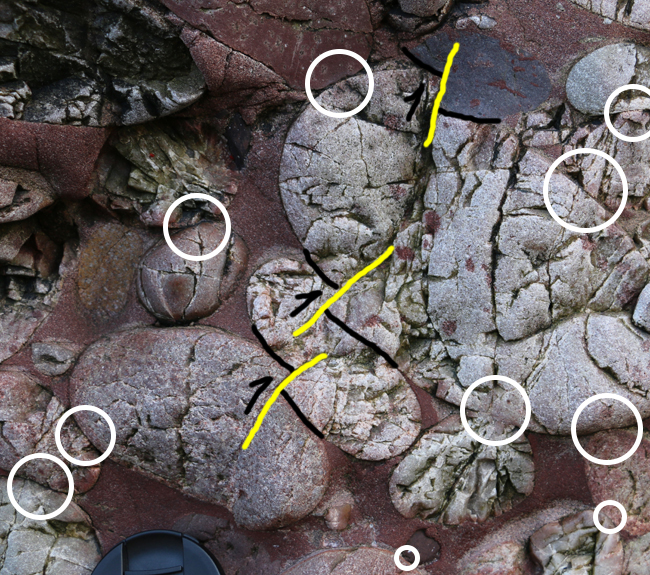
 Callan Bentley is Associate Professor of Geology at Piedmont Virginia Community College in Charlottesville, Virginia. He is a Fellow of the Geological Society of America. For his work on this blog, the National Association of Geoscience Teachers recognized him with the James Shea Award. He has also won the Outstanding Faculty Award from the State Council on Higher Education in Virginia, and the Biggs Award for Excellence in Geoscience Teaching from the Geoscience Education Division of the Geological Society of America. In previous years, Callan served as a contributing editor at EARTH magazine, President of the Geological Society of Washington and President the Geo2YC division of NAGT.
Callan Bentley is Associate Professor of Geology at Piedmont Virginia Community College in Charlottesville, Virginia. He is a Fellow of the Geological Society of America. For his work on this blog, the National Association of Geoscience Teachers recognized him with the James Shea Award. He has also won the Outstanding Faculty Award from the State Council on Higher Education in Virginia, and the Biggs Award for Excellence in Geoscience Teaching from the Geoscience Education Division of the Geological Society of America. In previous years, Callan served as a contributing editor at EARTH magazine, President of the Geological Society of Washington and President the Geo2YC division of NAGT.
I loved the caves of Cushendon. We have seen many caves here in America but had never seen a conglomerate cave. Thanks for the information in the parallel fault lines.
I live nearby and am a very elementary amateur geologist. Tx for the info, it really helps. I took some folks there recently and they had a hard time believing the flood and matrix idea. I got them to stand back and scan up the outside wall and then asked them how to account for the fact the composition at the top was the same at the bottom. It took a moment. Couldn’t stop them talking about afterwards Off to sit on Scawt Hill now… Slainte
PS. Cushendun is a village…